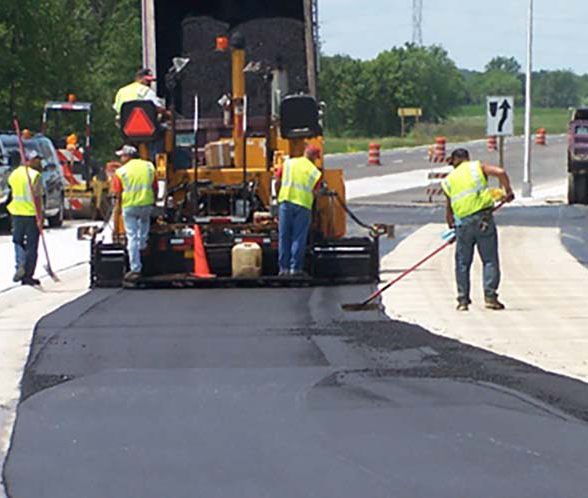Take Full Advantage Of Room Performance with Hot Mix Asphalt Angled Parking Lot Solutions
Take Full Advantage Of Room Performance with Hot Mix Asphalt Angled Parking Lot Solutions
Blog Article
Opening the Keys of Warm Mix Asphalt Modern Technology
Exploring the depths of hot mix asphalt innovation uncovers a world where careful procedures and exact formulas assemble to form our roads and infrastructure. The fusion of aggregates, binders, and fillers isn't simply a building and construction task but a strategic orchestration of resilience and effectiveness. As we peer into the intricate dancing of parts, a tapestry of strength and sustainability unravels. What lies beneath this surface area of asphaltic mastery, and what secrets wait to be introduced in the world of paving innovations?
Value of Hot Mix Asphalt
Warm Mix Asphalt plays an important function in modern framework development as a result of its sturdiness and cost-effectiveness. As one of the most typically made use of paving product for roads, freeways, and parking area, Hot Mix Asphalt supplies a series of advantages that add to its relevance in building projects. One crucial benefit is its ability to withstand heavy website traffic lots and extreme weather, providing a trusted and long-lasting surface for transport networks. In Addition, Warm Mix Asphalt is affordable in both initial building and lasting upkeep, making it a preferred choice for numerous facilities tasks.
The longevity of Warm Mix Asphalt stems from its make-up, which consists of accumulations, binder, and filler materials that are meticulously chosen and mixed to satisfy details efficiency needs. Overall, the importance of Warm Mix Asphalt in infrastructure advancement can not be downplayed, as it continues to be a keystone of contemporary construction methods.
Components of Asphalt Mixes
The structure of asphalt blends is composed of thoroughly picked accumulations, binder, and filler materials that are vital for attaining specific performance demands. Accumulations are the key part of asphalt blends, supplying toughness and security. The binder, commonly bitumen or asphalt concrete, holds the accumulations with each other and gives adaptability and resilience to the mix.
The combination and proportion of these elements play a considerable function in establishing the top quality and efficiency of the asphalt mix. Designers meticulously design the mix to satisfy particular demands, thinking about aspects like web traffic volume, climate conditions, and sidewalk life-span. Appropriate option and harmonizing of aggregates, binder, and fillers are vital for producing long lasting, resilient asphalt pavements.
Mixing and Manufacturing Strategies

Once the aggregates are selected, the binder, typically asphalt cement, is included in bind the products with each other. The binder's top quality and amount considerably impact the mix's resistance, toughness, and adaptability to look at more info ecological elements. Furthermore, fillers like hydrated lime or Portland concrete might be integrated to improve specific characteristics of the asphalt mix, such as its workability or moisture resistance.
During manufacturing, the accumulations and binder are heated up, generally between 250-325 ° F(121-163 ° C ), to promote blending and make sure proper covering of the accumulations. The blending procedure has to be comprehensive to achieve an uniform mix that advertises the wanted performance qualities of the asphalt. Various strategies, such as batch mixing or drum blending, are employed to attain top quality and regular asphalt mixes for building and construction jobs.
Aspects Affecting Asphalt Efficiency
Factors influencing asphalt efficiency encompass an array of variables that affect the sturdiness, longevity, and overall top quality of asphalt sidewalks. One key aspect is the quality of materials made use of in the asphalt mix.

Style factors to consider, such as pavement density and drain, are necessary in making certain the long-term performance of the asphalt pavement. By very carefully taking into consideration these designers, contractors and factors can maximize asphalt performance and enhance the solution life of sidewalks.
Lasting Practices in Asphalt Innovation

Furthermore, the advancement of warm-mix asphalt (WMA) technologies has gained grip in the last few years. WMA permits the manufacturing and positioning of asphalt blends at reduced temperatures contrasted to traditional hot-mix asphalt, resulting in minimized energy usage and greenhouse gas discharges. Additionally, the use of permeable asphalt mixes can assist alleviate stormwater drainage concerns by permitting water to penetrate via the sidewalk and into the ground, promoting natural water filtering and charge procedures. By applying these lasting methods, the asphalt industry can add to building a much more eco-friendly and resilient framework network.
Final Thought
To conclude, warm mix asphalt technology plays a critical function in contemporary infrastructure advancement due to its longevity and cost-effectiveness. By meticulously balancing parts, using appropriate mixing strategies, and web link considering different factors, designers can develop premium asphalt mixes that endure rush hour tons and extreme climate condition. Welcoming lasting methods, such as using recycled products and warm-mix technologies, better boosts the ecological friendliness of asphalt innovation.
Mixing and manufacturing methods in warm mix asphalt technology entail the exact mix and processing of accumulations, binder, and fillers to create a sturdy and high-performance asphalt mix.Elements influencing asphalt performance incorporate a variety of variables that impact the sturdiness, durability, and overall high quality of asphalt pavements. Lasting techniques in asphalt technology incorporate numerous initiatives aimed at lowering the ecological effect of asphalt manufacturing and paving processes. By integrating reclaimed asphalt sidewalk (RAP) and recycled asphalt roof shingles (RAS) into new asphalt blends, the market can dramatically reduce the consumption of raw products and energy, while likewise reducing land fill waste.
WMA permits for the manufacturing and positioning of asphalt blends at lower Visit Your URL temperature levels contrasted to traditional hot-mix asphalt, resulting in minimized power usage and greenhouse gas discharges.
Report this page